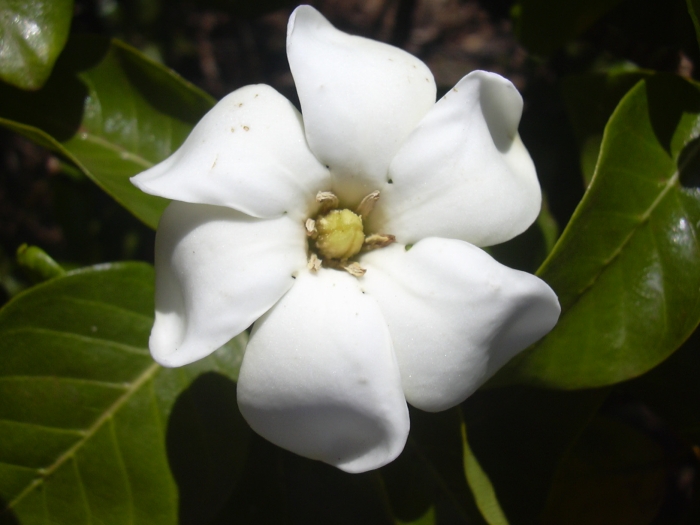Forest Gardenia
(Gardenia brighamii)
Forest Gardenia (Gardenia brighamii)
/
/

Forest & Kim Starr
CC BY 3.0
Image By:
Forest & Kim Starr
Recorded By:
Copyright:
CC BY 3.0
Copyright Notice:
Photo by: Forest & Kim Starr | License Type: CC BY 3.0 | License URL: https://creativecommons.org/licenses/by/3.0 | Uploader: BotMultichillT | Publisher: Wikimedia Commons | Title: Starr_030523-0050_Gardenia_brighamii.jpg | Notes: * '''Description:''' Swan River Pea (''Gastrolobium celsianum'') * '''Location:''' Australian National Botanic Gardens, Canberra, Australian Capital Territory, Australia * '''Date:''' 2005-09-21 * '''Source:''' picture taken by [[User:dlanglois|

































Estimated Native Range
Summary
Gardenia brighamii, commonly known as Forest Gardenia, is an evergreen shrub or small tree endemic to the dry forests and lava plains of the Hawaiian Islands. It is a rare species of flowering plant in the coffee family, Rubiaceae. Typically, it reaches a height of up to 5 meters (16 feet), with a similar spread. Forest Gardenia has glossy, dark green, ovate leaves that are 2.2–10.5 cm (0.87–4.13 in) long and 1.5–5.5 cm (0.59–2.17 in) wide. The plant is known for its fragrant, solitary white flowers, which have a tubular base 15–20 mm (0.59–0.79 in) in length and six lobes, blooming sporadically throughout the year but most profusely from spring to early summer.
The Forest Gardenia is valued for its ornamental features, particularly its fragrant flowers which can add a tropical allure to gardens. It is used in cultivation for its aesthetic appeal and is suitable for planting as a specimen or in a mixed shrub border. It requires full sun to light shade, low to moderate water once established, and well-draining soil. While it is not a common garden plant, it can be grown in warm climates or as a container plant in cooler regions. Due to its rarity, it is not typically associated with significant pest or disease problems, but it can be susceptible to root rot in poorly drained soils. It is important to note that Gardenia brighamii is considered endangered in its natural habitat, and cultivation efforts can contribute to its conservation.CC BY-SA 4.0
The Forest Gardenia is valued for its ornamental features, particularly its fragrant flowers which can add a tropical allure to gardens. It is used in cultivation for its aesthetic appeal and is suitable for planting as a specimen or in a mixed shrub border. It requires full sun to light shade, low to moderate water once established, and well-draining soil. While it is not a common garden plant, it can be grown in warm climates or as a container plant in cooler regions. Due to its rarity, it is not typically associated with significant pest or disease problems, but it can be susceptible to root rot in poorly drained soils. It is important to note that Gardenia brighamii is considered endangered in its natural habitat, and cultivation efforts can contribute to its conservation.CC BY-SA 4.0
Plant Description
- Plant Type: Tree, Shrub
- Height: 15-20 feet
- Width: 10-15 feet
- Growth Rate: Moderate
- Flower Color: White
- Flowering Season: Spring, Summer
- Leaf Retention: Evergreen
Growth Requirements
- Sun: Full Sun, Part Shade
- Water: Medium
- Drainage: Medium
Common Uses
Butterfly Garden, Fragrant
Natural Habitat
Endemic to the dry forests and lava plains of the Hawaiian Islands
Other Names
Common Names: Hawaiian Gardenia, Na’u
Scientific Names: , Gardenia brighamii,
GBIF Accepted Name: Gardenia brighamii H.Mann